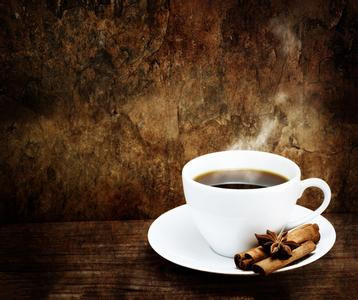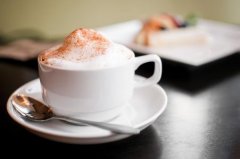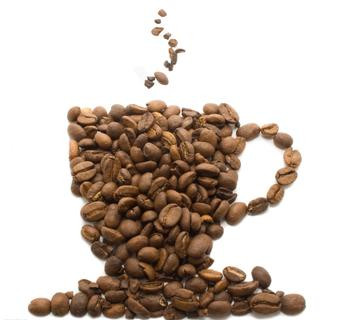Which baking mode is the best?

Because of the cultural and regional differences mentioned earlier, it is difficult to draw a conclusion on this topic. But for those who sell coffee beans, the "best" is the one with the highest sales. Most bakers have their own long-term philosophy of baking and bean blending. They are very competent professionals in this field, but no one dares to be sure which baking method is the "best baking method" at the scientific and objective level, because no baking method can really shake the boulder of cultural and regional preferences. Who dares to say arbitrarily to a coffee drinker from Normandy, France (most people in this area tend to drink dark black coffee with a mild charred flavor): "because medium-roasted coffee contains more flavor oils, so it must be the best to drink." Even if you tell him so, the friend from Normandy would rather have a cup of coffee with a scorched taste.
One of the greatest pleasures of roasting coffee beans at home is that you can discover the best baking mode for yourself through different experiences. But the biggest problem with baking at home is that even if a batch of very good coffee beans are baked today, it will be very difficult to recreate the flavor in this baking mode next time. However, if you take a more systematic coffee roasting step, then the stability of each batch may be improved, but roasting at home is itself a romantic and adventurous thing, if you want to pursue "pure flavor consistency." you might as well go directly to your own baking cafe to buy freshly roasted coffee beans.
Recognized inappropriate baking mode
There are some clear rules to follow to bake a good batch of coffee beans, but the definition of inappropriate flavor is universal. Under too light roasting, the internal temperature of the coffee beans does not exceed 390 degrees Fahrenheit / 200 degrees Celsius, while the exterior color is only light brown, and the flavor oil has not yet begun to develop. At this time, the coffee beans are brewed. The result is a cup of coffee full of fishy smell, sour and no aroma. Under too deep roasting, the internal temperature of coffee beans rises to more than 480 degrees Fahrenheit / 250 degrees Celsius, the appearance is black or black, most of the flavor oils are volatilized at high temperature, and the woody parts of coffee beans are roasted into coke. if you take this kind of coffee beans to brew, you will get a cup of coffee with thin viscosity and obvious charred taste. It is similar to commercial coffee beans (commercial coffee beans refer to coffee enterprises that follow the chain system).
In addition, other generally recognized bad baking modes are to bake coffee beans at relatively low temperatures for a long time, or to bake coffee beans deep inside. Fortunately, most of the current bean roasters specially designed for roasting coffee beans can avoid these tragedies, but if you use difficult equipment to bake, you must pay attention! For details, please see the baking equipment selection and operation process recommendations in Chapter 5.
As long as you avoid these extreme baking results, there is a lot of room for you to travel, and even what kind of baking method is the best? We still have to go back to the level of culture and personal preferences!
Important Notice :
前街咖啡 FrontStreet Coffee has moved to new addredd:
FrontStreet Coffee Address: 315,Donghua East Road,GuangZhou
Tel:020 38364473
- Prev

Freshly baked beans fresh out of the pot are not the best time to drink
The fresher the coffee beans, the more aromatic substances they retain, but the beans are not as fresh as possible. There is a period called the bean cultivation period, which most freshly roasted coffee beans have to go through. In fact, freshly roasted coffee beans are often either unable to extract the flavor they should have, or with a lot of woody odors. Because the roasted coffee beans
- Next

General knowledge of coffee roasting the origin of roasting patterns
At present, the naming method mainly comes from two sources: one is the general preference of national drinkers' baking mode: Ruyi baking, French baking and so on. One is the naming rules developed by coffee professionals in the United States from the end of the 19th century to the beginning of the 20th century. The origin of these two names is still vague to some extent, so now there is a more objective way to assist in interpretation.
Related
- What is the meaning of lactic acid fermentation with coffee bean treatment?
- How to judge the state of foam by sound?
- How does the latte pull out the unicorn pattern? Come to get for a little trick to improve the flower pull!
- Will flower pulling affect the taste of the latte?
- Do you know the history of coffee?
- The difference between honey treatment and sun washing what is raisin honey treatment?
- What kind of milk can a novice use to make coffee foam to keep the foam longer? The correct method and skills of milking tutorial sharing
- Why do washed coffee beans taste sour? Flavor characteristics of washed Coffee
- Introduction to the skill of how to practice the size and height of water injection around the circle of hand-brewed coffee
- How do beginners practice coffee flower drawing from scratch?

